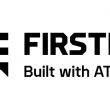Wireless mesh networks have a future — but what is it?
All of the buzz right now is about Long Term Evolution (LTE), 700 MHz spectrum and the proposed nationwide wireless broadband network for first responders. What’s not being talked about much these days are wireless mesh networks, most of which operate in the 2.4 GHz band. It wasn’t very long ago that such networks were in the spotlight, as they represented a quantum leap forward from the cellular digital packet data systems that many entities were relying upon for their data communications, which were limited primarily to text given CDPD’s ultra-slow 19.2 kbps throughputs.
However, it would be a mistake to think that wireless mesh networks will fade into extinction once LTE takes root, said Ksenia Coffman, marketing manager for mesh network vendor Firetide, who said that wireless mesh networks can provide download speeds up to 100 Mbps over multiple hops, allowing them to transmit high-definition video. Moreover, the 700 MHz spectrum that LTE networks will utilize, though suitable for mobile applications, “isn’t ideal” for fixed streaming applications, Coffman said.
“You need a higher frequency to achieve the low latency and high throughputs that applications such as video require,” Coffman said, adding that she envisions public safety leveraging multiple networks in the future, including wireless mesh.
Transportation is one sector that still seems to be embracing wireless mesh networks, especially for fixed video surveillance of train/bus stations and tunnels, according Coffman, who cited as evidence installations in the Seoul, South Korea, subway system and the light-rail system operated in Mumbai (formerly Bombay), India. While video surveillance might be the killer app for those agencies, it isn’t the only way that wireless mesh networks are being used in the transportation sector. Earlier this year, Amtrak deployed a Firetide mesh network to provide Wi-Fi service to passengers traveling to and from New York City on the agency’s Acela express train line, which caters to business passengers. The system was deployed in tunnels within 12 miles of Penn Station and on train platforms in the depot. Prior to the deployment of the Wi-Fi mesh network, passengers lost cellular Wi-Fi service as soon as they entered a tunnel.
Coffman said that speed of deployment was a major selling point for Amtrak. “This only took two to three months to deploy, as opposed to two to three years, which is how long it would have taken, if they had opted to put in fiber,” she said.
Amtrak also is using Firetide’s new mobility controller appliance, which is a back-end server that enables real-time, seamless, high-speed handoffs between nodes in a wireless mesh network. “Without this device, they would have to use a third-party server,” Coffman said. “It’s not a major breakthrough, but the result is that using it will increase the capacity of the network.” The device was announced late last year and began shipping in March.
Wireless consultant Andrew Seybold agreed with Coffman that 700 MHz doesn’t provide enough bandwidth to handle fixed broadband applications such as video, adding that public safety is well aware of this.
“They know that 700 MHz isn’t about fixed broadband, it’s about incident broadband,” Seybold said. “In the field, fixed broadband is being backhauled using microwave or fiber, or public safety’s 4.9 GHz spectrum.”
Seybold said that it’s “not realistic to believe” that there’s enough bandwidth at 700 MHz — even if public safety gets the D Block, which give the sector 20 MHz of contiguous spectrum — to allow agencies to use that spectrum for fixed applications and still have enough capacity available for incidents.
Nevertheless, Seybold doesn’t believe that wireless mesh networks have any future in the public safety or government sectors, because the 2.4 GHz spectrum is unlicensed and very cluttered, which makes the band prone to hackers and interference. Regarding clutter, Seybold said that he regularly measures activity at an intersection in downtown San Francisco. Four years ago, he identified four Wi-Fi access points. Today there are more than 50.
Instead, Seybold sees a niche for wireless mesh networks in the consumer sector.
“We may end up with hybrid systems that take advantage of TV white-space spectrum — first for a wide-area mesh and then, using an 802.11 Wi-Fi adapter, for in-building penetration,” Seybold said. “But nobody is talking about that for anything but consumer use.” He added that trying to use unprotected 2.4 GHz spectrum for public-sector applications “doesn’t make a lot of sense.”

















